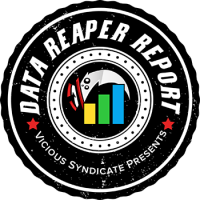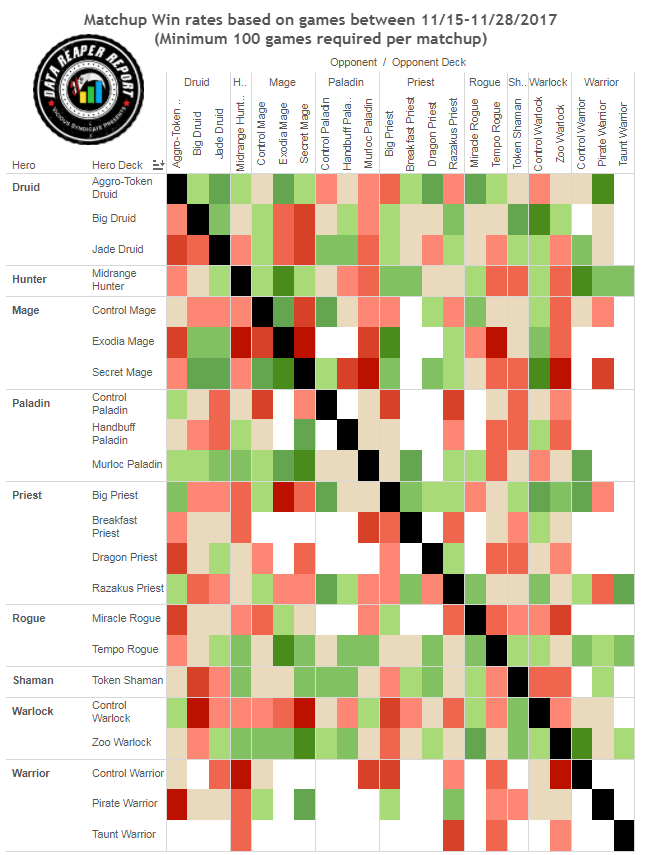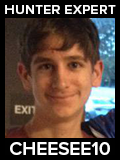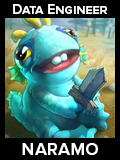
Welcome to the 72nd edition of the Data Reaper Report!
Our Data Reaper Project, including the Data Reaper Live has 3,800 active contributors. Without them, this project would not be possible, so we’d like to thank all of our contributors for their help.
Quick Links
Class/Archetype Distribution | Class Frequency | Matchup Winrates | vS Power Rankings | Class Analysis & Decklists | Meta Breaker of the Week | How to Contribute | Credits
Number of Games
| Overall | 65,000 |
| Legend | 9,000 |
| Ranks 1-5 | 26,000 |
| Ranks 6-10 | 18,000 |
| Ranks 11-15 | 10,000 |
Class/Archetype Distribution
[TABS_PRO id=11295]
Class Frequency
[TABS_PRO id=11296]
Class Frequency Discussion
This is the final report of the KFT Meta. The Data Reaper will be taking its usual break with the launch of the new expansion, and the next full report is expected to release on December 21st, two weeks after Kobolds & Catacombs goes live. During this time we will be performing archetype analysis in order to update our deck detection algorithm and make sure it works accurately. The work should be completed after the first week of the expansion, so our Live app will be updated with new archetypes around that time. We may also publish a short piece about the first days of the expansion, depending on our progress.
The top 3 classes have mostly stayed put. There’s a slight increase in Priests at lower skill levels, and a significant decline in Tempo Rogue at legend ranks, pushing Rogue’s popularity to the 3rd spot. At the bottleneck to legend, Rogue is still the most popular class.
Both Priest and Druid show quite a bit of diversity. Druid has its three established archetypes that see a fair amount of play, with Jade Druid slightly increasing in play at legend ranks. Razakus Priest is the dominant archetype for its class, but there are buds of other strategies showing up, including the recently-discovered Breakfast Priest. Note that the Keleseth Razakus Priest variant is relatively uncommon, but is slowly increasing in play, providing another twist to the archetype. It’s the only significant and recent development in the current meta, and we mention it in the Priest section.
The rest of the meta is waiting until the new expansion launches. Once the card reveal season starts, Hearthstone activity drops and meta development halts. Therefore, in this report we will be focusing more on the classes’ future prospects going into the next expansion.

[TABS_PRO id=11297]
vS Power Rankings Discussion
Tempo Rogue and Big Druid sit at the top of the meta. These decks define the early game and the late game edges of the KFT meta’s spectrum. Tempo Rogue has been a dominant archetype since the balance changes went live and other classes’ early game tools were nerfed. Big Druid took off at a later stage and challenged Jade Druid’s and Razakus Priest’s late game dominance, pushing both of these archetype’s win rates down.
Since then, Razakus Priest has recovered from the meta’s hostility that heavily suppressed its win rate, and now displays a 50%+ win rate at all levels of play. This falls in line with the rise in play of the archetype over the last couple of weeks. Jade Druid took a more recent hit, but also looks to be slowly recovering in its performance against the field. Overall, the balance changes ended up creating a relatively healthy meta, in which no deck was “too much to handle”, and most classes (even the weakest ones) had decks that were competitive enough to see success at all levels of play. There is no class that’s truly in the dumpster.
The cons of the KFT meta is that we saw too little of six other classes. Not just in play rate, but also in terms of strategic diversity. Druid, Priest and Rogue were not just strong, but went through plenty of iterations, and even their most established archetypes significantly changed during this period. On the other hand, Shaman, Paladin, Hunter and Warrior did not show much beyond one archetype, and looked very one dimensional. We’re hoping that the tools they receive in the next expansion encourage them to take different directions from what we’ve grown accustomed to.
Class Analysis & Decklists
Druid | Hunter | Mage | Paladin | Priest | Rogue | Shaman | Warlock | Warrior
For the final couple of weeks of the KFT meta, one development in the Priest class has been the rise of Tempo Razakus Priest builds running Keleseth. These variants play very aggressively and look to pressure opponents while utilizing the Raza/Anduin combo to finish them off. Initially, these builds weren’t performing as well as the standard cycle builds, but lately they have picked up in both play rate and win rate and look like a legitimate alternative. Katsumi hit #5 legend piloting a slightly modified list initially built by Blastoise.
Going into the KnC expansion, Priest is likely to continue to be one of the strongest classes in the game, if not the strongest one. The community was in shock this week when Priest’s new spell, Psychic Scream, was revealed. It’s an incredibly powerful board reset tool which will be instantly inserted into Razakus Priest and perhaps other Priest decks as well. It’s a terrific fit for Razakus in particular as it’s a combo deck that’s not concerned with value or fatigue, since it is capable of beating any deck once it has drawn its win condition. Psychic Scream’s “drawback” might end up being an added bonus in many matchups, making it strictly better than Twisting Nether since it ignores deathrattle effects and costs less mana.
Psychic Screams adds even more consistency to Priest’s already powerful plethora of board clears, and many are concerned that we could enter an era of Prieststone, especially when you consider that Duskbreaker looks just as busted and will likely promote the rise of Dragon Priest as well. Out of the remaining cards revealed for the class, Temporus is the hardest to predict. The effect is potentially game breaking, but seems difficult to execute without risking yourself losing the game on the spot.
Overall, Priest has seen a lot of success during the KFT era, with many different archetypes performing well, including ones who never became that prevalent (Dragon, Silence, Breakfast). With some strong cards revealed for KnC, we’re pretty sure that the class’ golden age will not be ending anytime soon.
- Priest Class Radar
- Razakus Priest
- Big Priest
- Dragon Priest
- Silence Priest
- Katsumi’s Breakfast Priest
Whether it adopts a late game strategy or an early game strategy, Druid has proven to be one of the most powerful classes in the game. After the launch of KFT, it has risen to become one of the most overpowered classes in the history of the game. Balance changes have done a lot to keep it from being overbearingly powerful, but losing Innervate did not hurt the class nearly as much as losing Fiery War Axe hurt Warriors.
Looking forward, Druid is certainly a challenging class to design new cards for at the moment. Potential cards that look to promote new archetype tend to be taken by existing archetypes, making them more powerful. While this is true to an extent for any class, Druid has been the best example in recent times.
From the currently revealed Druid cards, Twig of the World Tree and Branching Paths are the most interesting. Branching Paths offers flexibility at the cost of efficiency, an interesting design that can make it very skill testing. Twig is much harder to evaluate, since its effect is so delayed, yet potentially game breaking. The synergy with Medivh by breaking the weapon early and casting UI is evident, and it also generally works well as a delayed tempo swing in a Big deck. It is also a good fit for any Druid combo deck that looks to do something special by spending 20-mana in a single turn. Whether it sees play or is deemed too slow, time will tell.
Rogue’s representation across the different ranks on ladder varies considerably. For players looking to make the push through to legend, Tempo Rogue is the go-to deck, but once amongst legend ranks, Rogue falls slightly behind Druid and Priest as the class of choice. Tempo Rogue has been dominating representation and win rate since the balance changes went live, marking a pretty successful period in the class’ history.
Rogues appear to be taking their sneakiness to a new level in KnC, acquiring some secrets of their own. These secrets could help an existing deck like Miracle Rogue, or perhaps lead to an entirely new archetype. The 2-mana secrets conflict with Prince Keleseth in Tempo Rogue, so they encourage taking the class into a different direction.
However, most of the community is less interested in the Rogue’s new secrets and more interested in Fal’dorei Strider. The card seems very powerful, and a natural fit for Miracle Rogue. A variant that looks to re-activate the card’s battlecry through Shadowsteps, Shadowcasters or other forms of duplication could rise as a result. The card might also see play in Tempo Rogue decks, since the 4 slot in Rogue is generally weak, but the lack of cycle in the deck might prove to be a hindrance.
Sonya Shadowdancer and Zola the Gorgon are two legendary minions that could bring Quest Rogue back to life. Sonya in particular has the potential to significantly accelerate quest completion rates due to its synergy with a single charge minion. However, as we have seen in previous expansions, Rogue cards are often some of the most difficult to rate without playing with them. One thing’s for sure; Rogue is getting trickier, which is great news for fans of the class.
Mage has been an overall middle-of-the-road class in the KFT meta. While it was certainly viable with three different archetypes seeing some play, all of them had relatively narrow niches and none of them really made a huge mark on the meta. Even so, some of Mage’s tools are so powerful that just a slight nudge from new cards can completely change the picture when it comes to the power level of these archetypes.
The Mage cards released so far seems to be very strong. Aluneth might be the strongest legendary weapon, offering a never ending source of card draw that can complement both aggressive burn Mage decks as well as combo-centric ones. Explosive Runes is a very good secret that always gets value whether in tempo or face damage, and cannot be easily played around, an issue that other Mage secrets struggle with. Raven Familiar and Arcane Artificier promote the usage of expensive spells and are particularly powerful in slower Control Mage decks. Lesser Ruby Spellstone and Leyline Manipulator might have the greatest potential in promoting stronger and more consistent shells for the Exodia Mage combo, with Time Warp and even without it. Since Exodia Mage tends to give Priest some fits, we expect to see a lot of experimentations with the archetype. If they bear fruit, watch out Hearthstone.
The post-nerf meta ended up being good for Warlock, or at least for Zoo Warlock, while Control Warlock continued to see some fringe play, but never ended up being a reliable choice.
Looking forward, Warlock seems to be getting some very powerful cards. Vulgar Homunculus is a 3-drop that costs 2 mana, something that has proven to be game breaking in the past, and could even push Zoo into dropping Keleseth. Kobold Librarian is pretty absurd. While it is fragile, a 1-mana 2/1 that cycles is powerful, and that alone could push it to be included in every Warlock deck regardless of its playstyle.
Control Warlock has also received a big boost in the form of Lesser Amethyst Spellstone as a way to gain life, an ability now lacking in Standard. While Life Tap cannot upgrade the spell, its upgraded version is so good that it’s well worth to accommodate it when building the deck. A card that both heals and removes is incredibly powerful, as it can completely swing the game. We’ve seen much weaker cards, such as Holy Fire, see play, so it’s likely to find a place in the meta.
There’s been discussion of including Cataclysm in a Quest Discard Warlock deck, but it’s unclear whether any decks in the format would be particularly vulnerable to a stream of 3/2 imps and no other cards coming out. Still, a 4 mana unconditional board clear deserves some attention.
Overall, Warlock’s spot in the meta going forward is unclear. While both major archetypes look to be getting some significant upgrades, they do have question marks. With Priest receiving some very powerful board clears, Zoo Warlock may find itself struggling to stick a board. Control Warlock seems to have it all: powerful board clears, single target removal and the much needed healing that allows it to comfortably play from behind, making it potentially the strongest anti-aggro deck in the game at KnC. However, its late game is still put into question when matched with Druid and Priest. If it can find a way to interfere with these classes’ late game plans consistently, or establish a late game plan that is just as powerful, it’s going to make a mark. If it continues to roll over and die to their pressure, it may find itself pushed out again.
Hunter was definitely not as weak during KFT as it was during other periods over the past year, but it’s certainly struggling to find a strong identity. It’s a challenging class to balance due to the inherently one-dimensional hero power as well as its base kit. Team 5 have mostly stayed away from giving Hunter card draw and strong aggressive minions in order to avoid promoting a potential Face Hunter archetype, a historical shell that saw most of its key cards nerfed over the years. Design has been focused on promoting the elusive “Control Hunter” archetype, but that hasn’t really materialized and it’s difficult to construct without card draw or strong reactive tools. Just look at Crushing Walls and compare it to removal in other classes.
Katherena Winterwisp is a very interesting legendary, and seems to promote a “Big Hunter” deck that looks to cheat out giant beasts into the board. Seeping Oozeling works well with Kathrena but it’s a tall task to justify including a 6 mana card in Hunter that’s not Savannah Highmane. Wandering Monster is a bigger Noble Sacrifice that could see play in Secret Hunter, but it’s not a card that screams power. It’s unlikely that Hunter becomes a dominant class next expansion considering the obvious direction the class is guided to, but since it’s definitely not in a hopeless spot, perhaps it can carve out a strong enough niche going forward.
Murloc Paladin is the best Paladin deck and also one of the best decks in the game going into the next expansion. It suffers in the Tempo Rogue matchup, since it thrives when it can get minions to stick on the board in order to snowball its tribal synergy. Handbuff Paladin is another Paladin deck that sees some play and success, but it occupies the same archetypical niche and performs worse on ladder due to consistency issues. Control Paladin will always be at least a fringe deck, since many players love its playstyle and it does have some powerful tools. However, it is currently dormant since it is outclassed by the meta defining late game strategies of KFT.
KnC appears to be trying to push for Recruit Paladin, a mid-range archetype that leverages Silver Hand Recruits as its primary win condition through buffs and other synergy cards. This archetype is very dominant in Wild, but its key cards have long retired from Standard format. Lost in the Jungle, Stand Against Darkness, Vinecleaver, and Lightfused Stegodon are not quite enough to give it the power level it needs to see play. With the inclusions of Level Up!, Unidentified Maul, and Drygulch Jailor, players might be encouraged to test its merits.
The new Paladin legendary, Lynessa Sunsorrow, seems decent in general as many Murloc Paladins currently run 4 buff spells (2x Spikeridged Steed, 2x Blessing of Kings). Of course, this is the kind of card that gets exponentially better every time even one decent buff card is printed. It also seems to promote Quest Paladin, as an additional reward from building your deck to include a large amount of buffs. However, it’s very weak to silence and isn’t as consistent as Bonemare, so whether it sees play or not is an open question.
The most interesting card Paladin has been shown so far is Call to Arms. Its effect is extremely powerful and can be easily abused in every type of Paladin deck. Drawing 3 cards for 4 mana and immediately playing them creates a huge tempo swing. It’s a comeback mechanism that allows Murloc Paladin or other aggressive Paladin decks to immediately generate an intimidating board. Slower Paladin decks sorely lack card draw, and Call to Arms has amazing synergy with Loot Hoarders, Doomsayers and Dirty Rats to both stall the game as well as cycle through your deck, making your future draws more impactful.
Unsurprisingly enough, Shaman concludes another lackluster week to finish a pretty bleak period in its history. While Token Shaman, the class’ only viable archetype, continues to see a decent amount of play, this usage is confined to the lower levels and drops off steeply as one goes up in ranks. This lack of usage can be attributed to little to no innovation, stale gameplay, and mediocre win rate against the top meta decks. The class’ only hope of revitalization is the ushering in of the new expansion, which can give Shaman a second lease on life.
Shaman’s issues come in two different directions. First, Token Shaman’s early game is just not strong or fast enough to intimidate anyone, and once its board is lost and it falls behind, it’s very hard to come back to the game save for a Doppel/Evolve combo. Second, Shaman’s late game is not powerful enough to threaten other late game decks. Elemental Shaman’s lethality is too low, Jade Shaman is too slow, and other Control Shaman decks are just too clunky and inconsistent.
Do the new cards so far solve these issues? Not really. The totem synergy is interesting, but it puts a further emphasis at leveraging board control while being useless without it. Windshear Stormcaller is a really cool card, but is the perfect example of this issue. The same goes for Primal Talismans, Grumble, Worldshaker and Lesser Sapphire Spellstone: all are mostly dead cards when you don’t have the board. The Shaman card that truly offers a way to swing the game is the Runespear, and it’s extremely expensive as well as inconsistent. The likely strongest card revealed for Shaman so far is Unstable Evolution, since it fits perfectly in current Shaman decks while offering a lot of flexibility.
The last Warrior report before the release of Kobolds & Catacombs reiterates what has been said so many times over this miserable period for the class. At first, there was some hope of a new Warrior deck being discovered that would be acceptable – there’s been no such thing, and as a result Warrior has spent all this time in the shadows.
It’s impossible to get a proper read on what the class will look like. Gather Your Party is likely going to be the only unconditional recruit card, which is potentially very powerful and seems best suited to some kind of Big Warrior that would work similarly to Big Priest. This would require more support as it’s missing some other key tools available to Priest (value generation in Eternal Servitude, specifically). Lesser Mithril Spellstone is a very high-value card if enough weapons are played, and carries potential in either a Big Warrior deck as a way to generate a board presence in a spell heavy deck, or in a Dead Man’s Warrior deck that looks to recycle it.
There seems to be a renewed interest in gaining armor and leveraging it towards a certain goal. Drywhisker Armorer and Unidentified Shield are armor engines that develop the board to some extent, while Geosculptor Yip is a late game value engine that’s reliant on armor gain.
The best Warrior card revealed so far is Reckless Flurry. It offers a potentially massive board clear in combination with armor generation for a very little cost. This card will likely help Control Warrior decks fend off early aggression, something that has become more difficult to deal with after the loss of Fiery War Axe. Warrior’s late game still comes into question, especially its ability to deal with Priest and Druid, so high powered cards such as these are definitely needed to bring the class back into the fold.
The true metabreaker will occur next week with the launch of Kobolds & Catacombs. It’s impossible to predict which direction the Hearthstone meta will take, since so much is still unknown. And even when all the cards are finally revealed, prophets often fall flat on their faces.
So what cards should we watch out for? From what has been revealed so far, this is our top 5 in no particular order.
Our Data Reaper Project, including the Data Reaper Live has 3,800 active contributors. Without them, this project would not be possible, so we’d like to thank all of our contributors for their help.
Preparing our weekly article requires a significant amount of time and effort from many individuals. We would like to wholeheartedly thank our current Patreons, whose generous donations help us fund computing and server costs.
vS Gold is a new membership plan aimed to support our efforts towards improving our content and data analysis while receiving some bonuses and extra features.
Tier 3+ Patrons
Special thanks to Leo G, Chungfr, Kognar, Aaron B, Jed M, Drew M, Alan J, lalasong, Eric L, Steve F, Batz, Jeffee83, Zolstar, Pink Mage Diaries, Dekkster Gaming, Connor L, and Eric H for supporting us for the month of November.
A HUGE thank you to our Tier 5 Patron(s): ByteCookie, and Curt S!
Contributors
Here are all the people that participated in bringing you this edition of the vS Data Reaper Report:































